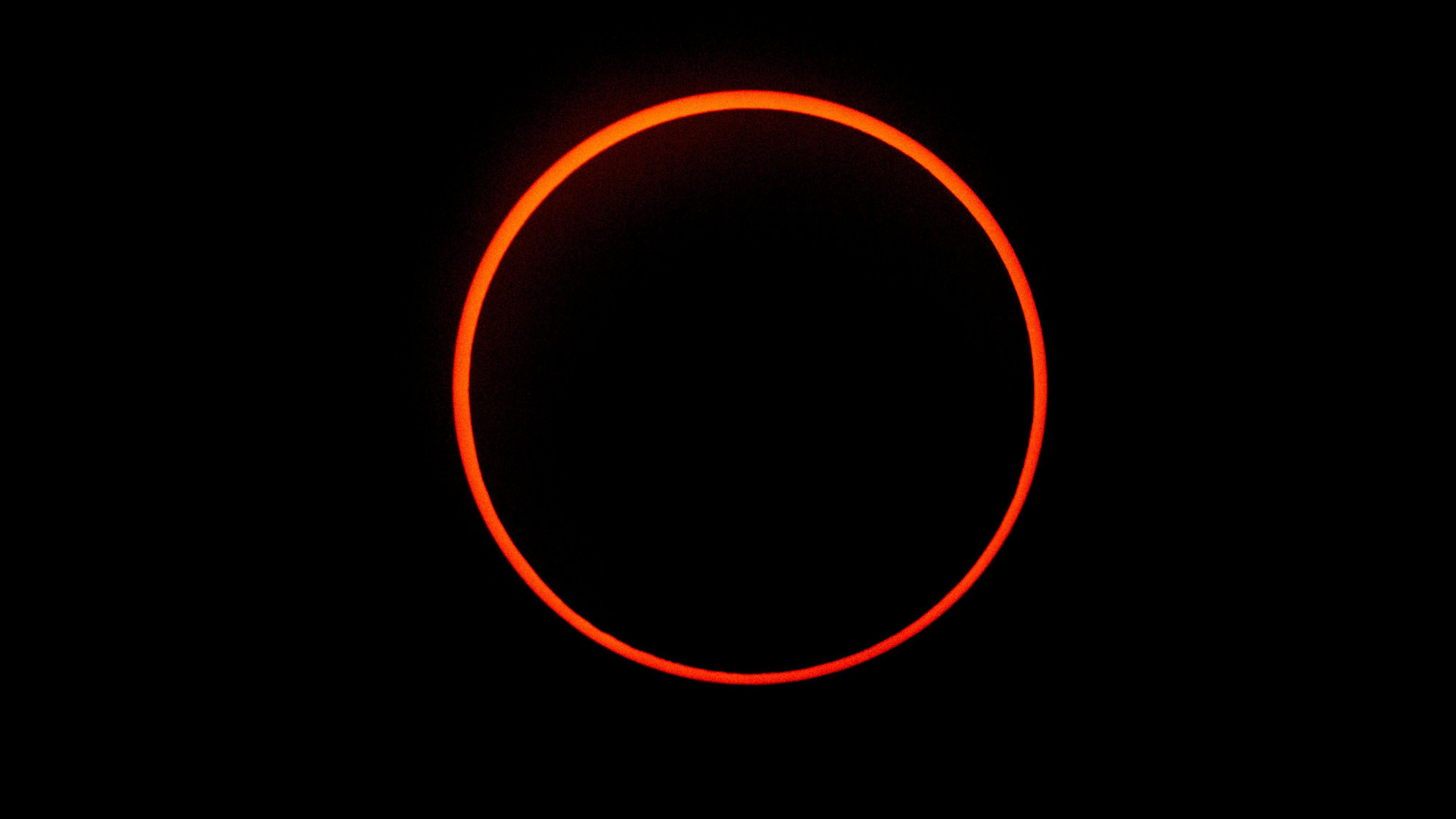What you need to know about the 'ring of fire' solar eclipse on Wednesday

This spectacular annular solar eclipse was seen in Panama in October 2023
- Published
On Wednesday afternoon a spectacular "ring of fire" annular solar eclipse will be visible for some parts of South America.
While southern Chile and Argentina will see a ring of the Sun as the Moon passes in front of it, those in the Falklands Islands will see a large solar eclipse.
No part of the solar eclipse will be visible in the United Kingdom.
What is an annular solar eclipse?
Solar eclipses happen when the Moon casts a shadow on Earth and in a total eclipse, the whole disc of the Sun is blocked.
An annular solar eclipse differs because some of the Sun will still be visible as a spectacular ring with the centre blocked out by the Moon.
The reason for this ring - known as the "ring of fire" - is because the Moon happens to be at its furthest point from Earth, called the apogee, and therefore appears slightly smaller in the sky.
This is the opposite to when the Moon is at its closest - the perigee - on its elliptical orbit around Earth, which gives us the viewings of the larger Supermoon.
The eclipse path on Wednesday afternoon
Where can I see the eclipse?
Wednesday's eclipse and "ring of fire" will first been seen on the remote Easter Island in the Pacific at 14:08 local time (20:08 BST).
It will then be seen on the south-west coast of mainland Chile at 17.20 local time (20:20 BST) before moving east into Argentina shortly after.
Those in the Falkland Islands will experience a partial solar eclipse of around 80-85%.
It will start at 16:12 locally (20:12 BST) in the Falkands, peaking at 17:30 (20:30 BST), before ending at 18:42 (22:42 BST).
The eclipse will not be visible in the UK.
Over the next couple of nights in the UK, however, you might just notice the smallest sliver of the Moon, as a new moon becomes visible. With very little moonlight, the nights will also appear very dark.
The next solar eclipse visible here will be 29 March 2025 when around 30-40% of the Sun will be in shadow.
After that, it will be 2026 when 90% of the Sun will be blocked in some locations.
The next total solar eclipse to be seen from the UK will not be until 2090.
What is the weather forecast?
The weather in southern parts of Chile, Argentina and the Falkland Islands is not looking the most ideal.
There is likely to be quite a lot of cloud in southern Chile in particular as a weather system brings in rain, sleet and some snow to higher ground.
To the eastern side of the southern Andes however, skies will be a little clearer for those in Argentina.
And in the Falkand Islands, it's going to be mostly cloudy with very limited breaks in the cloud
Tiny slivers of a new Moon will be visible across the UK over the next few nights where skies are clear
How to watch the eclipse safely
The most important thing is to never looking directly at the Sun.
Experts recommend using solar eclipse glasses, which have a special filter that blocks damaging UV rays. These glasses are different from sunglasses, as they block all light entirely except that coming from the Sun.
If you cannot get such glasses, try piercing a hole using a pin into a piece of paper. With your back to the Sun, hold that paper above your shoulder so the Sun's rays can shine through that small hole.
At the same time, hold up another piece of paper in front of you.
It will act like a screen, on to which the Sun's rays will be projected.
- Published5 April